Hester, J.P. 1943. Cactus and Succulent Society Journal [U.S.] 15 (12): 193.
Herbarium specimen; Herbarium specimen; Herbarium specimen; Herbarium specimen; Herbarium specimen; Herbarium specimen; Herbarium specimen; Herbarium specimen
Original species description
Flora of North America treatment
What is Cylindropuntia abyssi?
Cylindropuntia abyssi is a cholla only known from the area of Peach Springs, AZ (Anderson, 2001) and is sometimes called the Peach Springs Canyon cholla.
Details
G. abyssi occurs on the limestone hills and limestone-derived flats of this area between 500 to 800 m. Little study has been conducted since this taxon was described. This species may be a hybrid involving G. bigelovii, which also occurs in the Peach Springs area and which it superficially resembles.
G. abyssi are small, openly branching shrubs to 1 m tall. The stems are 8 to 14 cm long by 1.8 to 2.5 cm wide. There are 10 to 15 white or yellowish spines per aerole, and the sheaths are white, silver, or pale yellowish. The flowers, filaments, and stigmas are greenish-yellow with cream styles. Fruits are yellow, dry, and mostly spineless. G. abyssi is diploid (2n = 22).
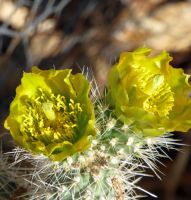
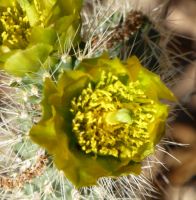

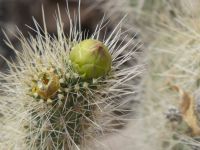

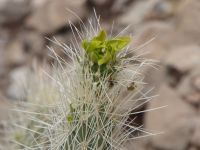
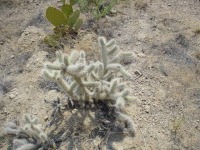
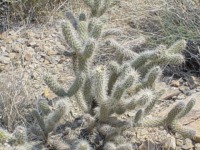

I have been looking for and documenting this sweet cholla for several years, its documented distribution now being from Cove Canyon (north side of Colorado River) downriver to west side of Grand Wash Cliffs, Grand Canyon. Interestingly, it is not found (yet) in Lake Mead National Recreation Area. At its furthest west local (GW Cliffs) it appears to occur above a certain elevation (ca 2300 ft) where it is replaced by C. echinocarpa at lower elevations. Possible hybrids involving C. whipplei at Cove Canyon and above Lava near Honga Springs documented; with C. acanthocarpa at Three Springs.